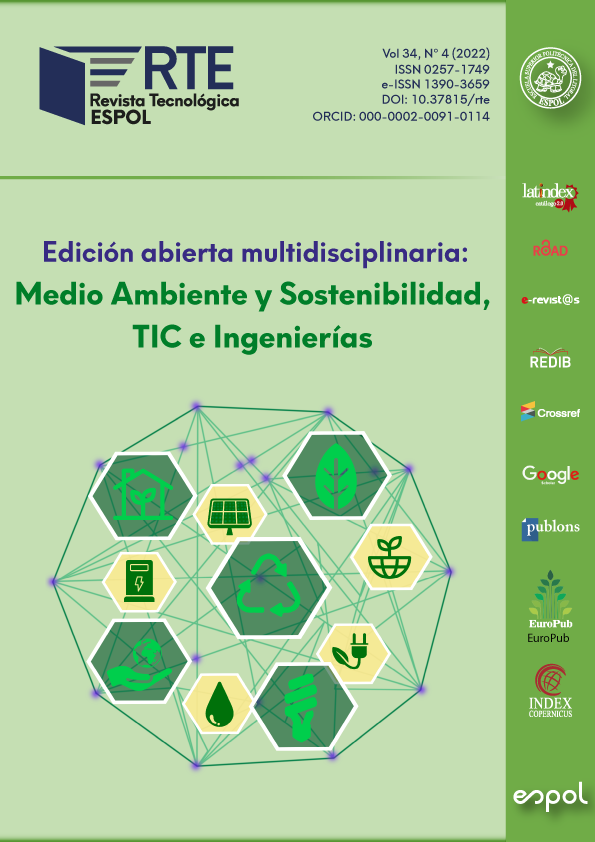This research presents the data analysis of electrical energy billed to regulated clients in the metropolitan region of Chile during 2015-2021 to establish the characteristics of the data structure and the relationship between the variables. It also aims to predict the classes of new records, and to identify underlying patterns in the data. This study uses descriptive statistical analysis, and the K-Means and K-NN machine learning algorithms. For this study period, it was established that the average unit energy consumption for residential customers was 453 kWh, and 10,315 kWh for non-residential customers. Likewise, there is a dependency between the number of clients and the electricity billed, as well as between the commune and the distribution company. On the other hand, the K-Means algorithm suggests a model that groups the data according to the type of customer and the type of electricity distribution company that supplies regulated customers. The application of the K-NN algorithm resulted in a model to predict the type of client of the new records, with an accuracy of 99.73%.

This work is licensed under a Creative Commons Attribution-NonCommercial 4.0 International License.
References
Amat Rodrigo, J. (s.f.). Ciencia de Datos, Estadística, Machine Learning y Programación. (Joaquin Amat Rodrigo) Recuperado el 16 de Julio de 2022, de https://www.cienciadedatos.net/documentos/pystats05-correlacion-lineal-python.html
Argüello Verbanaz, S., & García Bernal, N. (2020). Componentes y determinación de la tarifa eléctrica para los clientes regulados. Santiago de Chile: Biblioteca del Congreso Nacional de Chile.
Azócar Rojas, M. A. (2018). Estudio y análisis del Nuevo Decreto Tarifario 11 T. Aplicable a los suministros sujetos a precios. Valparaíso: Tesis de Pregrado, Pontificia Universidad Católica de Valparaíso.
Bernal, C. A. (2010). Metodología de la Investigación - administración, economía, humanidades y ciencias sociales. Bogotá: Pearson Educación.
Cielen, D., Meysman, A., & Ali, M. (2016). Introducing Data Science. Shelter Island, NY: Manning Publications Co.
Comisión Nacional de Energía. (16 de Julio de 2022). Estadísticas. Obtenido de Energía Abierta: http://energiaabierta.cl/categorias-estadistica/electricidad/
Fenner, M. E. (2020). Machine Learning with Python for Everyone. Boston: Pearson Education.
García Bernal, N. (2019). Traspaso de clientes regulados a libres. Valaparaíso: Biblioteca del Congreso Nacional de Chile.
Igual, L., & Seguí, S. (2017). Introduction to Data Science - A Python Approach to Concepts, Techniques and Applications. Switzerland: Springer International Publishing.
Kong, W., Wang, Y., Dai, H., Zhao, L., & Wang, C. (2021). Analysis of energy consumption structure based on K-means clustering algorithm. E3S Web of Conferences 267, 01054 (2021). Beijing: E3S. https://doi.org/10.1051/e3sconf/202126701054
Lee, W.-M. (2019). Python Machine Learning. Indianapolis: John Wiley & Sons, Inc.
M. Shapi, M. K., Ramli, N. A., & Awalin, L. J. (2021). Energy consumption prediction by using machine learning for smart building: Case study in Malaysia. Developments in the Built Environment. https://doi.org/10.1016/j.dibe.2020.100037.
McKinney, W. (2018). Python for Data Analysis. Sebastopol, CA: O’Reilly Media, Inc.
Mellado Leal, B. M. (2021). Aplicaciones de Data Science para la mejora de la medición y cobro de la distribución de la energía eléctrica en contextos de pandemia mundial. Santiago de Chile: Tesis de Pregrado, Universidad de Chile.
Mercados Energéticos Consultores. (2014). Análisis de consumo eléctrico en el corto, mediano y largo plazo. Santiago de Chile: Mercados Energéticos Consultores.
Moreno, R., Sánchez, M., Suazo, C., Negrete, M., Olivares, D., Alvarado, D., . . . Basso, L. (2020). Impactos del COVID-19 en el Consumo Eléctrico Chileno. Revista Ingeniería de Sistemas.
Pizarro Herrera, G. N. (2017). Reconocimiento de patrones y pronóstico de consumo eléctrico. Valparaíso: Tesis de Pregrado, Pontificia Universidad Católica de Valparaiso.
Rajabi, A., Eskandari, M., Jabbari Ghadi, M., Li, L., & Zhang, J. (2020). A comparative study of clustering techniques for electrical load pattern segmentation. Renewable and Sustainable Energy Reviews. https://doi.org/10.1016/j.rser.2019.109628.
Raschka, S., & Mirjalili, V. (2017). Python Machine Learning - Machine Learning and Deep Learning with Python, Scikit-Learn, and TensorFlow. Birmingham: Packt Publishing Ltd.
Russano, E., & Ferreira Avelino, E. (2020). Fundamentals of Machine Learning Using Python. Oakville, Canadá: Arcler Press.
Salazar Córdova, M. A. (2018). Impactos de la emigración de clientes regulados al mercado libre. Catastro, evolución y efectos en los clientes y en las empresas proveedoras (generación y distribución). Santiago de Chile: Tesis de Maestría, Universidad Técnica Federico Santa María.
Sociedad Alemana de Cooperación Internacional. (2020). Las Energías No Renovables en el Mercado Eléctrico Chileno. Santiago de Chile: Deutsche Gesellschaft für Internationale Zusammenarbeit (GIZ) GmbH.
Umargono, E., Suseno, J. E., & S.K, V. G. (2020). K-Means Clustering Optimization Using the Elbow Method and Early Centroid Determination Based on Mean and Median Formula. Advances in Social Science, Education and Humanities Research, volume 474. DOI:10.2991/assehr.k.201010.019.
Valgaev, O., Kupzog, F., & Schme, H. (2017). Building power demand forecasting using K-nearest neighbours model – practical application in Smart City Demo Aspern project. CIRED, Open Access Proc. Journal (págs. 1601–1604). IET. DOI:10.1049/oap-cired.2017.0419.
Yilmaz, S., Chambers, J., Li, X., & Patel, M. K. (2021). A comparative analysis of patterns of electricity use and flexibility potential of domestic and non-domestic building archetypes through data mining techniques. Journal of Physics: Conference Series. DOI:10.1088/1742-6596/2042/1/012021.







